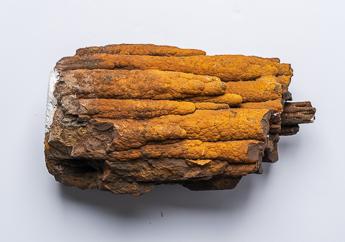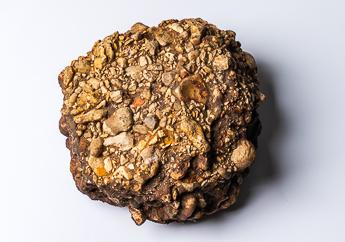Minerals

A mineral is a naturally-occurring, inorganic, solid substance, with distinctive physical properties, a definite chemical composition, and a characteristic geometric or crystal structure. Materials referred to as economic minerals include true minerals (as defined above), rocks and mineral fuels.
Rocks

A rock is a naturally occurring substance, composed of one or more minerals. Rocks have a degree of chemical and mineralogical constancy, but their properties and compositions are variable. They owe their distinctive properties to the rock-forming minerals present (such as quartz, calcite or feldspar). Rocks are classified into three categories – igneous, metamorphic and sedimentary.
Igneous Rocks
Igneous rocks are formed by the melting of pre-existing rocks (igneous, metamorphic or sedimentary) into molten rock or magma. The subsequent cooling of magma forms new rock. The magma is either forced into older surrounding rocks (intrusive) or is discharged onto the Earth’s surface by volcanic eruption (extrusive). Granite (intrusive) and rhyolite (extrusive) are examples of igneous rocks, which are common in the St. Francois Mountains of southeast Missouri.
Sedimentary Rocks
Sedimentary rocks are formed from eroded pieces of rock that have been deposited in layers by wind or water. The sediments are then lithified (compacted and cemented) to form rock. The sediments may be derived from any rock type (igneous, metamorphic or sedimentary). Most of the rocks exposed in Missouri are sedimentary rocks that were formed on the floors of ancient oceans that once covered virtually the entire state. Other sedimentary rocks were accumulated as stream or lake sediments or were windblown deposits.
Metamorphic Rocks
Metamorphic rocks are formed from pre-existing rocks by extreme heat and pressure that cause changes in the rock’s mineralogical, chemical and structural properties. Metamorphic rocks do not occur in Missouri in their original environment. Ice age glaciers moving south from the Arctic deposited metamorphic rocks from Minnesota, Wisconsin, Michigan, South Dakota and Canada in northern Missouri. These rocks can be found as glacial erratics and are usually composed of igneous and metamorphic rock types most resistant to weathering. Quartzite is a common metamorphic glacial erratic found in Missouri.
Additional Reading
Search the Missouri Geology Bibliography.
Visit the department’s Ed Clark Museum of Missouri Geology, where you will find numerous samples of rocks and minerals on display.
